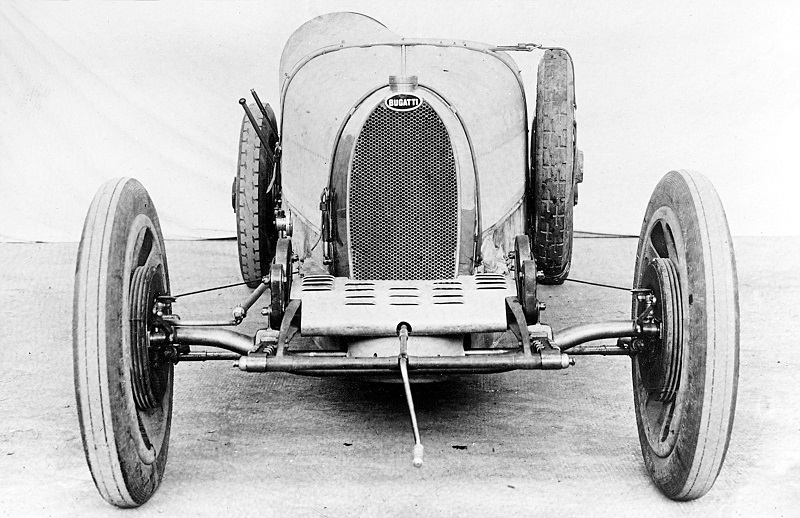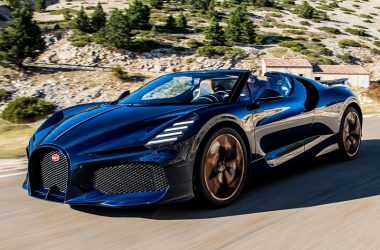In the realm of automotive excellence, few vehicles have left as profound an impact as the Bugatti Type 35. Conceived by the visionary Ettore Bugatti, this iconic race car seamlessly blended cutting-edge technology, exceptional driving dynamics, and timeless aesthetics. The Type 35’s DNA remains a cornerstone of Bugatti’s design philosophy, influencing contemporary masterpieces like the new Bugatti Tourbillon hyper sports car.
The Visionary Behind the Legend
Ettore Bugatti, hailing from a family of artists, placed a paramount emphasis on aesthetics in all his endeavors. His dual prowess as an engineer and artist ensured that every car he crafted was a harmonious blend of form and function. This meticulous approach culminated in the creation of the Type 35, a vehicle that debuted in 1924 and quickly became synonymous with racing success and design innovation.

The Birth of an Icon
The Type 35’s streamlined eight-cylinder design was not merely about aesthetics; it was a calculated effort to enhance aerodynamics. Every detail of the car was meticulously crafted, from the lustrous hollow front axle to the engine-turned metal dashboard that prevented stress cracks. Even the components hidden beneath the bonnet were designed to be as visually appealing as they were functional, epitomizing Ettore Bugatti’s philosophy of technical beauty.
A Legacy of Innovation
The Type 35’s influence extends far beyond its era. Its legacy is celebrated in modern Bugatti models, such as the Bugatti Bolide, which features the ‘Type 35 100 Anniversaire’ motifs on its fenders. This homage, showcased at the Goodwood Festival of Speed, highlights the enduring combination of beauty, innovation, and technology that defines Bugatti’s DNA.
Design Principles That Transcend Time
Bugatti’s design ethos, rooted in the principles established by Ettore Bugatti, continues to inspire contemporary creations. The perfect proportions of the Type 35’s fuselage-shaped body influenced the designs of the Veyron, Chiron, and now the Tourbillon. The horseshoe grille of the latest models, although evolved, retains the same purity and serves as the genesis of the car’s lines and volumes.
A Seamless Blend of Tradition and Modernity
The Type 35’s sophisticated mechanical linkage for its front brakes exemplifies the intricate human-machine interface that Bugatti continues to prioritize. This principle guided the development of the Tourbillon’s engine start lever, a tactile experience that links modern technology with the craftsmanship of the past. The Tourbillon also boasts 3D-printed aluminum suspension arms and uprights, a cutting-edge innovation that reduces weight by 45%, mirroring Ettore Bugatti’s pioneering use of aluminum wheels and hollow axles.
A Testament to Timeless Craftsmanship
Frank Heyl, Bugatti’s Director of Design, emphasizes that every Bugatti, even without its exterior body panels, is instantly recognizable due to its inherent aesthetic. This commitment to authenticity and purpose-driven design ensures that every Bugatti tells its own story, continuing Ettore Bugatti’s philosophy of technical beauty combined with the latest technology.
The Tourbillon: A Modern Icon
Every Bugatti created in Molsheim is designed to endure for centuries, and the new Tourbillon proudly upholds this tradition. Like the Type 35 before it, the Tourbillon is destined to become an automotive icon, embodying the spirit of innovation, beauty, and performance that defines Bugatti. As Frank Heyl articulates, Bugatti’s legacy is one of timeless authenticity, a philosophy that continues to inspire and influence every car that bears the Bugatti name.
The Bugatti Type 35 is not just a race car; it is a symbol of enduring excellence, a testament to Ettore Bugatti’s vision, and an everlasting source of inspiration for one of the world’s most prestigious automotive brands.







